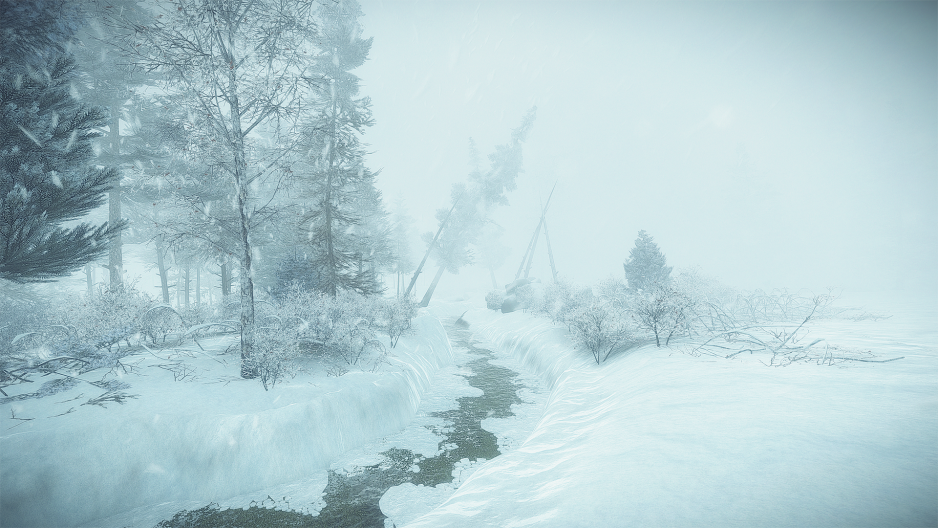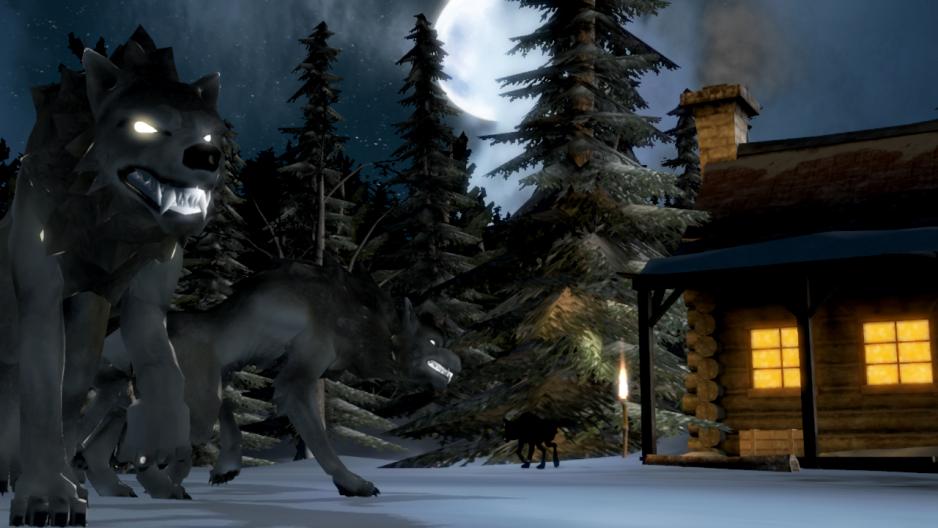Northern Québec comes alive through video games

The history and folklore of northern Québec are explored through two critically acclaimed video games.
Imagine you’re settling in for a long, cold winter’s night when a frantic banging at your cabin door wakes you from your thoughts. You open it to find your sister who breathlessly tells you a harrowing tale of how she was attacked by a priest possessed by the devil, the local church burned down as a result, and now all the local villagers believe she is to blame.
You don’t have long to think, however, as soon a pack of bloodthirsty (were)wolves descend to attack your home. Oh, and it is 1858 in a small village in northern Québec. This is how Sang-Froid – Tales of Werewolves, a game by Longueuil-based Artifice Studio, begins.
Now fast-forward just over a century to 1970. You are a private investigator, Carl Faubert, hired by a rich copper magnate to investigate vandalism at his summer home in the northern community of Atamipek Lake. Carl’s client suspects the local Cree community is to blame as they have long opposed his exploitation of the land. After arriving at the town in the middle of an eerie winter storm only to find it completely empty, it doesn’t take long for those playing Kona, a game produced by Québec City-based Parabole studio, to figure out that something strange is afoot.
While both Québec and Canada have substantial video game industries, it is rare to find anything set locally—let alone in the Northern Canada. High North News had the opportunity to chat separately with Yan Pepin, the President and Creative Director at Artifice Studio, and Jean-François Fiset, the Community Manager at Parabole, to discuss how their games tackle northern themes, how they represent communities close to home yet find international audiences, and how they can be a means to explore both history and politics.
Unforgiving northern winters
There is a lack of extraneous characters in both games. Nonetheless, the protagonists are never truly alone: the harsh winter of Northern Québec remains a constant companion as you play through these games. You are constantly reminded that this environment—at least in winter—can be an unforgiving place. The cold is as much an enemy as any wolves that may be lurking just beyond the treeline.
According to Yan, in Sang-Froid there was a conscious decision to evoke a specific image of the winter in the north to conjure a sense of isolation and desperation: "The whole game is about surviving in winter. We could almost say that winter is a character in the game. From the sound your boots make in the snow, to the vapor that comes out of your mouth, everything in the environment reminds you that the world outside your warm little house is harsh and unforgiving."
Although the settings of both places are fictional, they are nonetheless designed to evoke specific places in northern Québec. Jean-François notes that, in the case of Kona, this was the result of extensive background work and a close study of northern regions: "We did a lot of research to be as historically accurate as possible and we wanted the game to reflect how people in remote regions lived." And it appears to have paid off as Kona has received positive feedback from those who actually live in these regions.
The north as local…
By setting these games in Québec these studios have managed to capture the essence of what’s close to home and create something that resonates with local communities. But this also has its drawbacks. In particular, there is always the concern that the domestic audience is not sufficiently large to make such games profitable.
Even though Québec (and Canada as a whole) has a substantial video games industry that has produced some of the largest and most critically acclaimed titles in the industry, they are rarely set in Canada—let alone northern Québec.
Jean-François feels this is a wasted opportunity as "Quebec is beautiful and we have a rich historical background. We wanted people to be immersed in the world we live in every day."
This is not true of all creative industries in Québec. Yan is quick to point to the fact that, while major American studios come to the belle province to shoot films, there is also a flourishing local film industry. This includes critically acclaimed film directors like Denis Arcand, Xavier Dollan, and Denis Villeneuve whose internationally acclaimed movies tell the story of Quebecers, their land, and culture.
This was part of what inspired Yan’s team to set Sang-Froid at home: "We thought that the same should be true for videogames."
… and international
This doesn’t mean that the games speak only to those familiar with northern Québec, instead the authenticity of the games appears to have a broad appeal—at least judging by their overwhelmingly positive reviews.
Yan emphasizes that it was this authenticity that led to the success of the game.
"What is the most local and personal, if you’re sincere, can also be the most universal. The themes at the heart of Sang-Froid (cunning wins over brute force, survival by adapting to nature, fear of the night, love of family, etc.) are indeed shared by a lot of cultures."
In the case of Sang-Froid, Yan also emphasizes that a lot of myths and folklore—in this case of largely centered around werewolves—have their parallels in other cultures.
"A lot of people from all around the world could relate to the universe of the game, often finding similarities between Québécois legends and their own. Creatures like the Windigo have their equivalent in Polish and Russian lore, for example."

And, despite werewolves in Québécois culture being quite different from mainstream Anglo-Saxon depictions (in Québec they are closely linked to religion and the concept of the soul), Yan says that a lot of players from Scandinavia found similarities with Nordic mythology and folklore.
For his part, when asked about the positive reception of Kona, Jean-François is quick to emphasize the hard work of the team at Parabole. Yet he concedes that even they were surprised by the overwhelmingly positive reception to the game and its setting.
"Well, it is our first game and we worked really hard to make it as good and beautiful as possible. We are really proud of the result and we were expecting positive feedback. However, we were not expecting that much praise, especially with all the other great games out there!"
Exploring history and politics through art
Even though they are both fictional stories, one of the most interesting features of both games is how they expose the player to the politics and history of northern Québec.
In the case of Kona, the story highlights some of the historic tensions between Québécois and Indigenous communities. Jean-François emphasizes that, in making the game, they wanted to make the story a realistic depiction of that period of northern Québec’s history.
"Among other things, the conflicts between Quebecois and the First Nations are common, especially when it comes to the exploitation of the land. A lot was happening in 1970 and we wanted players to learn a little about us while playing the game."
When asked about the inclusion of Indigenous folklore in Sang-Froid, Yan highlights that, while he has always found these tales fascinating and would include them on that basis alone, there is are also larger political motivations.
"We had to talk about Amerindians because the game is taking place on their land after all! I mean, they were here first, and the land is totally infused in their legends and culture."
Beyond being infused with their legends, Yan speaks to how this is part of a larger political debate in Québec and in Canada: "I think it is especially important for Québécois and French Canadians to respect and promote Amerindian culture as much as we can, since we were both colonized by Anglo-Saxons. How can we ask English Canadians to give our culture and language a special status by arguing that we were here before them if, on the other hand, we can’t show the same respect to Amerindians who were here before us?"

